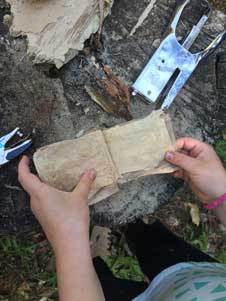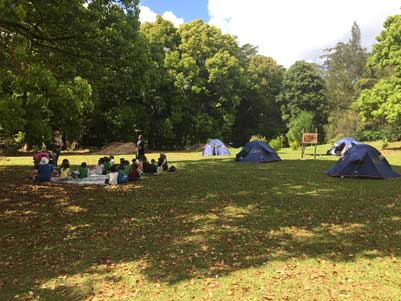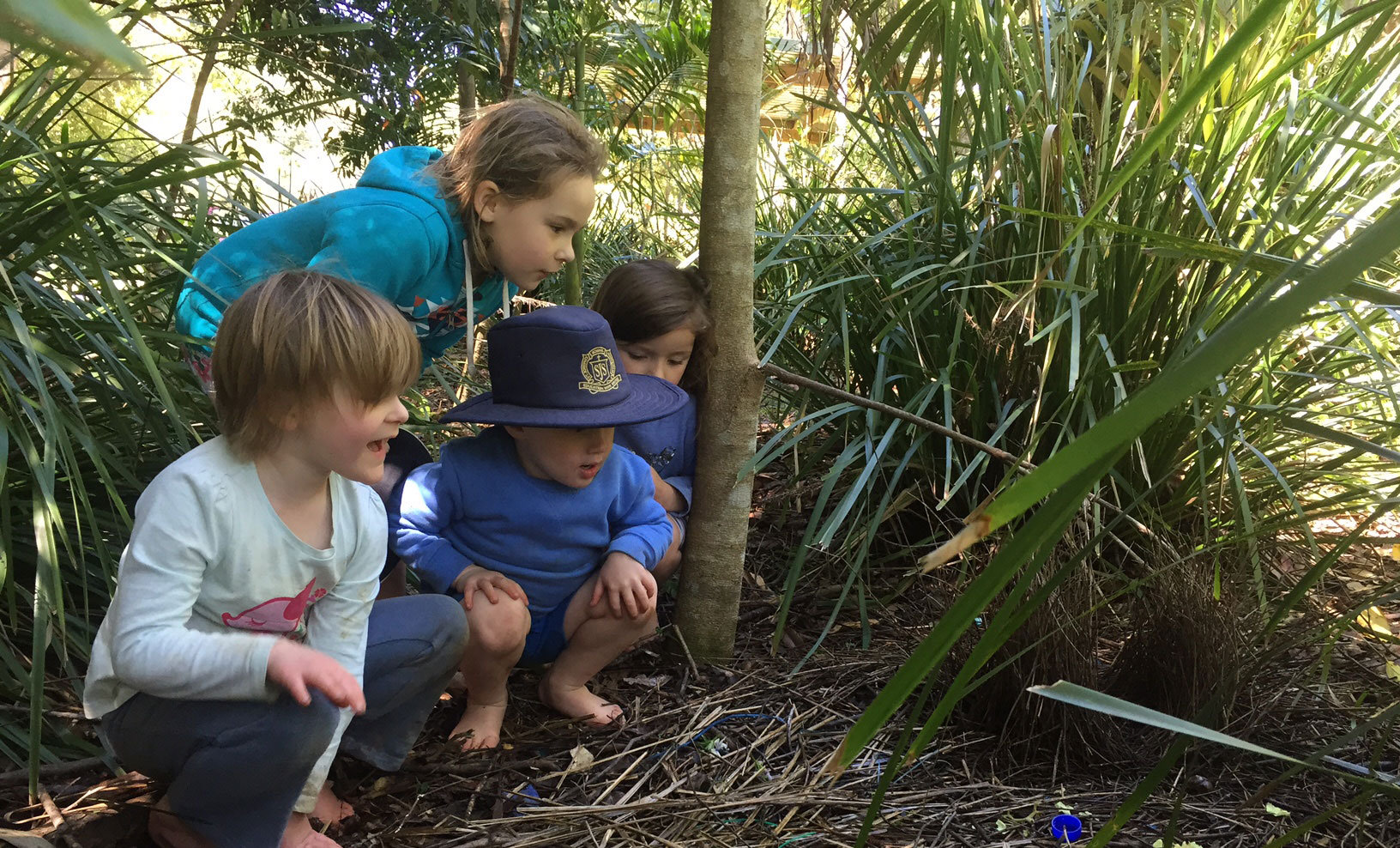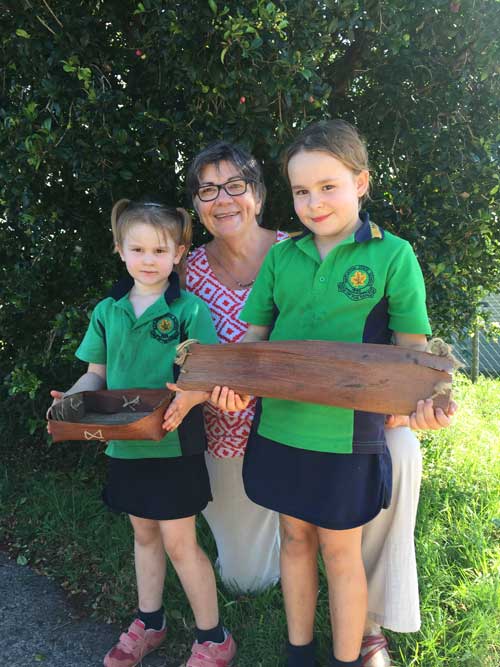Nearly all of us have memories from childhood of being outside and being a part of nature whether it was making a cubby up a tree or playing in the local creek. Well those experiences are now known as ‘nature-based play’ and are seen as something the current generation of youngsters are missing out on due to safety concerns, too much screen time and less unstructured time at home.
Often it is these experiences from childhood that give us greater empathy with the environment when we are older. There is concern the younger generation who are living in front of screens and indoors are heading towards a prognosis of ‘nature deficit disorder’ or even worse ‘ecophobia’. Luckily these conditions can mostly be remedied with quality time outside, which is a big part of the curriculum at Mapleton State School.

(Left:)A Paperbark book.

The campsite near Baxter Creek.
Students at Mapleton State School are involved in a number of outdoor activities. Fortunately the school has a long section of Baxter Creek (part of the Mary River catchment) through its grounds. The vegetation along Baxter Creek was mostly cleared but has had several revegetation projects carried out over the last 20 years. A dedicated campsite near the creek allows for nature-based activities to be undertaken adjacent to this natural area. A pontoon over a dam nearby is a good area for observing wildlife, and tracks along the creek allow for exploring and learning.

Mapleton State School students inspect a Satin Bowerbird bower during a working bee.
Classes have campout days where activities can range from making teepees and stretchers out of natural and recycled materials through to decorating bags with leaves and making paperbark books. At a recent campout day, Grade 2s learnt from an Aboriginal elder that Piccabeen Palm (Archontophoenix cunninghamiana) fronds were used by local Aboriginal people to make carrying baskets or ‘piccies’. This turned into a class project that integrated indigenous history, science, technology and English. Discarded Piccabeen Palm fronds were collected at Baxter Creek and then soaked in water for a number of days to soften. These were then moulded and joined with string. Instructions on how to make a piccie were written (see post). Problem solving skills were a must.
The creek is a natural outdoor classroom for many subjects from science to art. Younger students study what animals live in the creek and sketch them. Older students are involved in managing the creek and exploring issues such as erosion and revegetation. Nature Play Passports were introduced in 2015 to encourage students to record their outside activities. Some classes go on weekly outdoor missions and are recorded in their Nature Play Passports. Real life problem solving activities at Baxter Creek can lead to inspired writing back in the classroom.

The school has been registered in Land for Wildlife since 2001 and a number of environment grants have been sourced. Working bees involving parents occur once a term maintaining the revegetation and weeding along Baxter Creek.
Lunch each Thursday is ‘Gumboot Day’ where students are allowed to play in a designated area on the creek, with extra staff supervision and a first aid kit nearby! Children are encouraged to play with natural materials such as sand, rocks and sticks. These materials are used to make cubbies and swings.
Mapleton State School Principal, Jen Clarke, comments: “These experiences help the children connect with nature in fun and positive ways. Hopefully these memories will reinforce a sense of belonging in and to their environment helping them to value nature when they are adults”.
References and Further Reading
Louv R (2008) Last Child in the Woods. Algonquin Books.
Louv R (2011) The Nature Principal: Human Restoration and the End of Nature-Deficit Disorder. Algonquin Books.
Gray T (2012) Vitamin N: The missing ingredient in the 21st Century Curriculum. Western Sydney University Blog.
Climbing trees: Getting Aussie Kids Back Outdoors. Report available via www.treeday.planetark.org
Planet Ark (2013) Missing Trees: The Inside Story on an Outdoor Nation. Report available via www.treeday.planetark.org
Article and photographs by Stephanie Reif Land for Wildlife Officer Sunshine Coast Council
